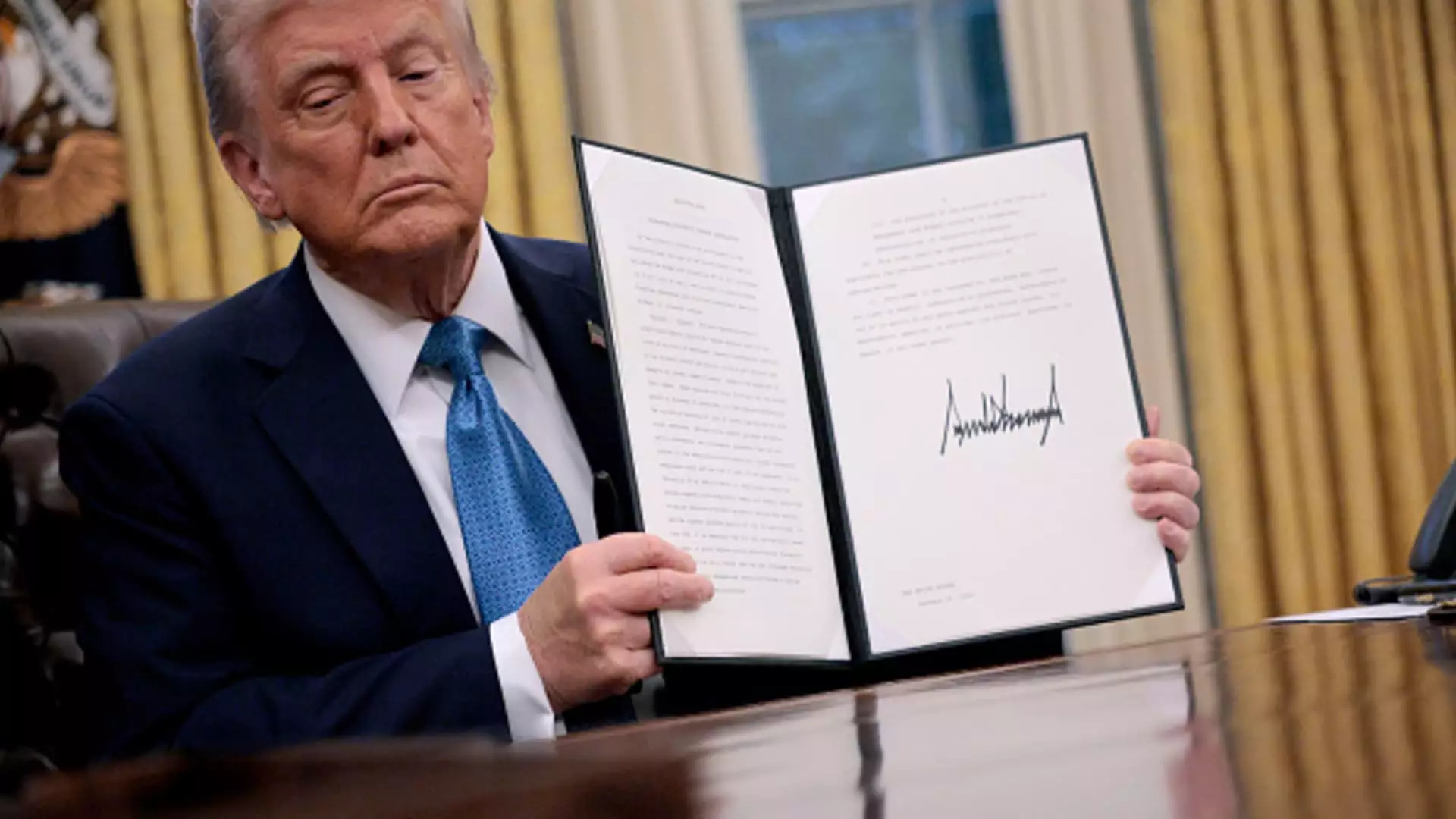The recent pronouncements by President Donald Trump regarding tariffs have sent shockwaves through the U.S. stock market, serving as a potential catalyst for a global trade war. This article takes a deeper look into how these tariffs, particularly on imports from Mexico, Canada, and China, could create complex ramifications across various industries, impacting stock valuations and corporate operations.
On a single weekend, President Trump announced a staggering 25% tariff on goods imported from Mexico and Canada, along with an additional 10% on Chinese imports. The rationale behind these tariff impositions seems rooted in a broader strategy of reshaping international trade agreements. While the intention may be to protect American jobs and stimulate domestic manufacturing, the immediate outcome was a sharp decline in stock prices of companies with extensive international operations.
Trump’s approach of temporarily halting the Mexico tariffs following a commitment from the Mexican government to bolster border security highlights the fluid nature of these trade discussions. However, despite this temporary reprieve, the uncertainty surrounding future U.S. trade policy remains a source of anxiety among investors and corporations alike.
The Impact on Key Industries
The automotive sector stands out as one of the most susceptible industries to these tariffs. Major car manufacturers like General Motors, Ford, and Stellantis heavily depend on cross-border manufacturing processes. Disrupted supply chains could force these companies to reconsider their production strategies, potentially leading to increased local manufacturing and higher operational costs.
Additionally, sectors such as beverage imports and restaurants are likely to experience immediate ramifications. For instance, the large-scale importation of alcoholic beverages from Mexico has positioned companies like Constellation Brands in a precarious situation as they grapple with inflated costs due to tariffs. The potential retaliatory stance from Canada regarding its liquor imports further complicates the entire scenario, adding another layer of uncertainty.
Retailers and Their Dilemma
Retailers, especially those reliant on inexpensive imports, find themselves at the frontline of the fallout from these tariffs. Discount retailers like Five Below and Dollar General, which thrive on low-cost goods from China, may face dire consequences. Increased import costs could cascade down to consumers in the form of higher prices, subsequently squeezing margins for these retailers and dampening consumer spending.
Moreover, the burgeoning online retail sector—specifically entities utilizing the “de minimis” exemption to ship goods without incurring duties—may experience significant constraints. Companies like Temu and Alibaba’s AliExpress, which have relied on this loophole to keep pricing competitive, may find their operational models threatened by these tariff changes.
Goldman Sachs has indicated that Trump’s aggressive tariff regime might lead to a 5% downturn in U.S. stocks, primarily due to anticipated reductions in corporate earnings. This prediction serves as a stark reminder of the interconnectedness between domestic policy and market performance. As corporate balance sheets suffer from diminished profit margins—as seen in the automotive and retail sectors—the broad range of stock valuations could follow suit.
Moreover, the ominous potential for a trade war with the European Union looms over the market. The implications of engaging multiple global partners in trade disputes could escalate the damages currently inflicted upon the U.S. economy, driving volatility and further uncertainty within the stock market.
The implications of these tariffs extend beyond immediate stock price reactions and profit margins; they reflect a fundamental shift in how businesses must strategize their operations amidst looming economic changes. With the aftermath of these tariffs still unfolding, it is clear that companies will need to adapt rapidly, reassessing supply chains and operational tactics to mitigate the risk. Investors, too, will have to navigate this landscape with caution as the global trade dynamics evolve—understanding that the landscape of American business is entering a phase laden with both opportunity and risk.

